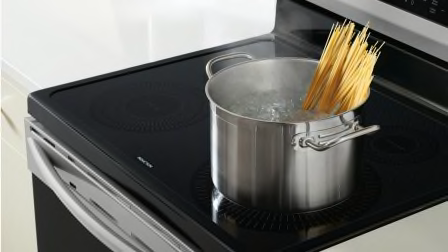How to Live Better With COPD
If you have chronic obstructive pulmonary disease, these strategies can help you breathe easier and be more active

Chronic obstructive pulmonary disease (COPD) is actually a group of progressive lung diseases such as emphysema and chronic bronchitis that can make breathing challenging. More than 15 million Americans have a COPD diagnosis, but many more are probably unaware that they have the condition.
Although smoking is a leading cause of COPD, up to 30 percent of people with the disease never smoked. Asthma, certain genetic factors, and long-term exposure to dust or chemical fumes are also risk factors. If you have shortness of breath, experience chronic coughing or wheezing, and/or produce lots of mucus, a doctor may diagnose COPD after taking a health history, evaluating your symptoms, and ordering tests that may include one for lung function and a chest X-ray.
Finding Relief
Steer clear of harmful situations. “The first thing is to reduce further damage if possible,” says MeiLan Han, MD, a spokesperson for the American Lung Association as well as a professor of medicine and chief of pulmonary and critical care at the University of Michigan. So quit smoking if you smoke, and avoid secondhand smoke and polluted air whenever possible.
Get treatment. A provider will generally start with prescriptions for inhaled therapies such as bronchodilators (including albuterol inhalers) and steroids, which can help open airways, Han says. They can be used as needed or regularly depending on your symptoms. (Those with advanced disease may need oxygen or lung surgery.) But there’s no one-size-fits-all approach, and regular checkups are important.
Manage flare-ups. Being unable to breathe can be “panic-inducing,” Han says. Along with inhalers, a technique called pursed lip breathing can help in nonemergencies by moving more oxygen into your lungs. To do it, breathe in through your nose, then pucker your lips as if you’re going to whistle and blow out, Han explains. See if you can breathe out longer than you inhale, then repeat.
Get into an exercise routine. Physical activity is critical for people with COPD, Han says, and it should be tailored to the amount of exertion you can tolerate. Supervised or monitored pulmonary rehabilitation programs are available in person and online, and can reduce flare-ups and improve your life, says Sarath Raju, MD, who specializes in pulmonary and critical care medicine at Johns Hopkins University in Baltimore. If you can’t participate in a program, walking or using a stationary bike or treadmill to increase your endurance can help, Raju adds.
Maintain a healthy weight. Being either underweight or overweight is linked to COPD complications. Stock up on nutritious foods that are easy to make, like precut fruits or vegetables, the American Lung Association suggests.
Seek support. It’s common to feel depressed or anxious if you have COPD, Han says. If you do, ask your doctor for a mental healthcare referral. Also consider joining a support group for people with COPD, such as the American Lung Association’s Better Breathers Club or COPD360social, an online community managed by the COPD Foundation.
Why It's Key to Avoid COVID-19
People with COPD are at risk for severe complications of COVID-19. And recurrent respiratory infections in people with COPD can lead to worsening lung function and health over time, Raju says. So in addition to the flu and pneumococcal vaccines, people with COPD should stay up to date on COVID-19 vaccines and boosters, he says.
Additional precautions such as wearing a high-quality mask in crowded spaces are also sensible, according to the American Lung Association. If you do get COVID-19, tell your provider right away because you may be a candidate for the antiviral Paxlovid.
Editor’s Note: A version of this article also appeared in the November 2022 issue of Consumer Reports On Health.




















